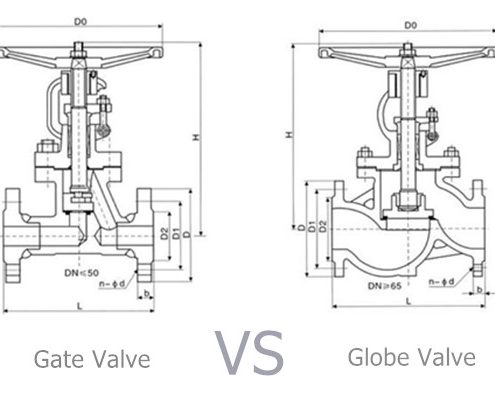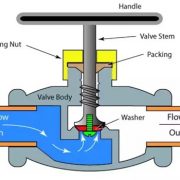How to distinguish the globe valve and gate valve?
 Globe valve and gate valves are the most frequently valves in piping systems, someone may be confused about them due to their similarities in structural construction, material grades, trims and other technical specifications. Here we will teach you how to distinguish the globe valve and gate valve.
Globe valve and gate valves are the most frequently valves in piping systems, someone may be confused about them due to their similarities in structural construction, material grades, trims and other technical specifications. Here we will teach you how to distinguish the globe valve and gate valve.
Difference structural and installation
Gate valves are more complex in structure and larger in size than globe valves. In the case of the same diameter, gate valves are higher than globe valves. So please note that rising stem gate valves require higher height space. In addition, the gate can be structural shaped like a wedge, knife, or parallel construction but globe not。
A gate valve can be installed in various directions while a globe valve only goes in one direction. The globe valve has two ways of installation, one is making the medium bottom entry from the valve core, when the valve is closed the disc is not under pressure, thus can extend the service life of the disc and can be replacement disc in front valve pipe pressure, however, the disadvantage is that the drive torque of the valve is large, which is about 1 time of the upper flow, and the axial force of the valve stem increases, which makes it easy to bend. So this method is generally only applicable to small diameter globe valve (DN50 below). The globe valves above DN200 are designed to make the medium top entry(The electric globe valve generally uses top entry).
Difference working principle
Globe valve can be used not only on cutting off, but also throttling and flow regulation applications. The fluid resistance of the globe valve is large, while the distance between the valve plate and the sealing surface is short, so the opening and closing is laborious and the travel is short. When the globe valve opens and closes, the handwheel rotates and lifts with the stem. But for gate valves, the stem moves up and down without changing the position of the handwheel itself. Gate valve is only fully open or fully closed, the travel of the gate is large and cost long the closing time. Gate valve is a general service valve that is used primarily for on-off, non-throttling applications.
Different flow
Gate valve operates in two direction and two-way flow. Gate valve runner in a horizontal line and the ordinary gate valve has a small flow resistance coefficient, that is about 0.08~0.12.
Globe valves will only work in one direction and it has a larger amount of fluid trapping in the line due to the direction of flow. The flow resistance of ordinary globe valve is 3-5 times that of gate valve, and the sealing can only be achieved by forced closing. The valve core of the globe valve only contacts the sealing surface when it is completely closed, so the wear of the sealing surface is very small. Globe valves with actuators should pay attention to torque control mechanisms.
Different sealing
The sealing surface of the globe valve comes from a small trapezoidal-shape side of the valve core (refer to the shape of the valve center for details), and the valve can be closed when the valve center falls off (large pressure difference leading to poor closure effect but good anti-reverse). Gate valve can be sealed by means of media pressure and sealing surface, the valve core and valve seat sealing surface always contact and rub each other when opening and closing, the sealing surface is easy to wear, the sealing effect is not as good as the globe valve, even if the valve center falls off, it will not cause the valve closure like the globe valve.

